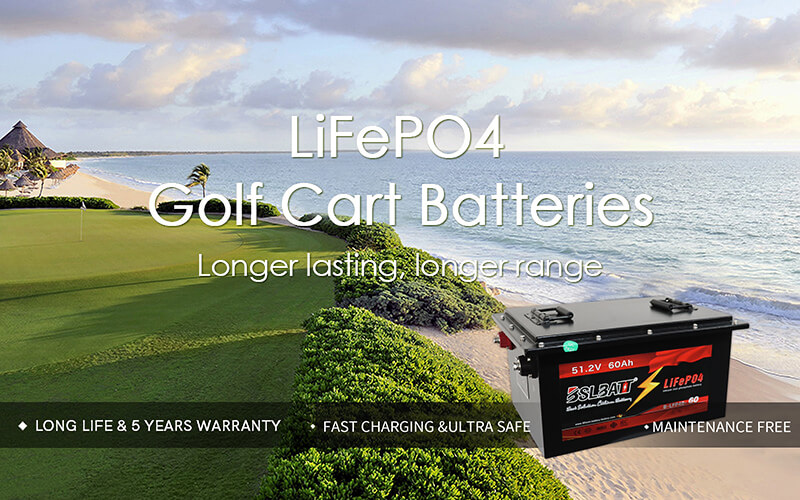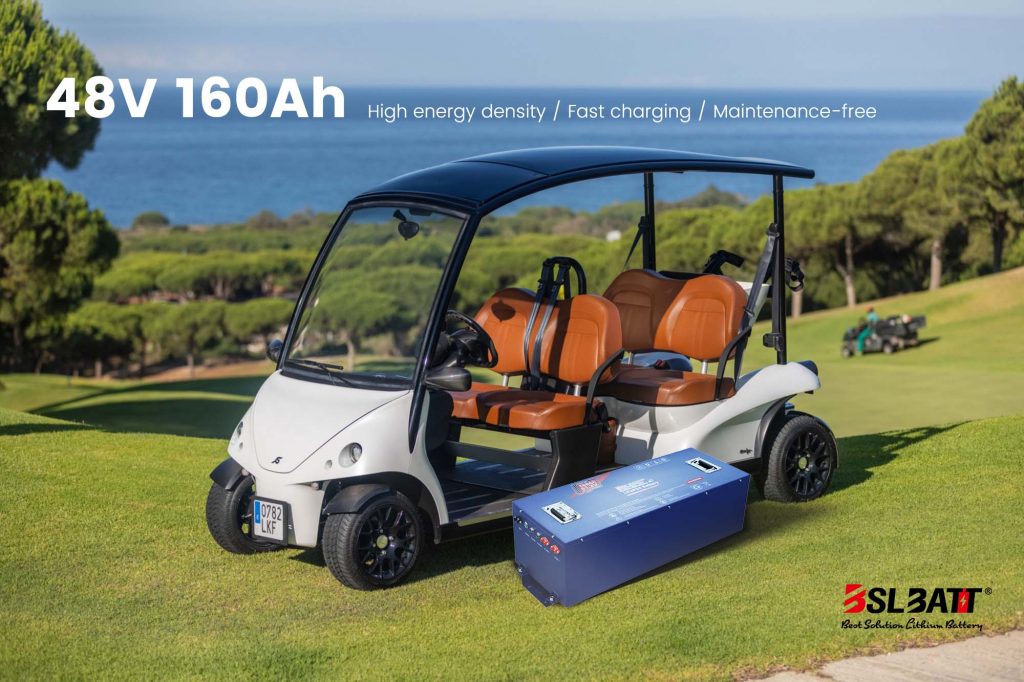
- China
- English
- Françai
- Español
- Deutsch
- Română
- العربية
- 한국어
- 日本語
- Italiano
- Português
- Gaeilge
- Dansk
- Čeština
- Русский
- Afrikaans
- Euskara
- Català
- Esperanto
- हिन्दी
- Ελληνικά
- Bahasa Melayu
- Polski
- Српски
- Kiswahili
- ภาษาไทย
- Tiếng Việt
- Türkçe
- Svenska
- Cymraeg
- Slovenčina
- Latviešu
- Malti
- Magyar
- Galego
- ગુજરાતી
- Eesti Keel
- বাংলা
- Shqip
- беларуская мова
- Nederlands
- Tagalog
- ქართული
- Íslenska
- Kreyòl Ayisyen
- Lietuvių
- Norsk
- slovenščina
- தமிழ்
- Українська
- ײִדיש
- اردو
- తెలుగు
- فارسی
- македонски
- ಕನ್ನಡ
- Bahasa Indonesia
- עברית
- Suomi
- Hrvatski
- Български
- Azerbaijani

Industry Application
Product Type
The Truth About Lead-Acid Vs. Lithium-Ion Batteries In Golf Cart
| Every Golf enthusiast’er knows that quality engine and Lithium Golf Cart batteries are key to a experience of playing successfully, but not everyone understands the pros and cons of different battery types. Is there much of a difference between the two main types of batteries, lead-acid vs. lithium-ion?
Will it matter which type of battery you choose to fulfill your power needs as an Golf enthusiaster? (Hint: You bet it will!) What’s the big deal? Well, once you understand the differences between lead-acid vs. lithium-ion batteries, you’ll be well-armed to choose a battery or a bank of batteries that will power your needs for years to come. That’s a huge deal, so let’s dive right in: Lead-Acid vs. Lithium-Ion BatteriesLead-acid batteries have been around since the mid-1800s and are the earliest type of rechargeable battery in existence! Over 170 years old, the technology behind lead-acid batteries is mature and successful. But it also means that it does not take advantage of the most advanced technology available. Let’s see how that might impact Golf enthusiast’ers in particular. Lead-acid batteries use a chemical reaction to generate electricity. Each 12-volt battery contains six (6) cells. And each cell contains a mixture of sulfuric acid and water (in varying degrees). Each cell has a positive terminal and a negative terminal. When the battery is generating power, it is discharging as it does so. The chemical reaction causes the sulfuric acid to break down into the water stored inside each cell to dilute the acid. So the use of power depletes the acid. When the battery is charging back up, the process reverses, and the battery’s recharging builds the acid molecules back up. That process is the storing of energy. (Remember – a battery doesn’t store electricity. It stores the chemical energy required to produce the electricity.) Each of the six cells in a 12-volt lead-acid battery has a voltage of about 2.1 volts when fully charged. Those six cells together then give a fully charged battery offering around 12.6 volts. (We use terms like “about” and “around” because exact voltage depends on various factors particular to the battery and the usage and care of that battery.) Pros of Lead-Acid BatteriesLead-acid batteries are popular for a variety of reasons. First of all, they offer mature technology that has been around for over a century and a half. This often gives people a sense of security as a widely understood technology. Lead-acid batteries are relatively inexpensive to produce (though terrible for the environment), making them relatively cheap to buy upfront. On the face of cost considerations, they initially appear to be the better deal for consumers. However, this does not consider the battery’s overall lifespan or the actual amount of energy you get out of them. Keep reading to discover how lead-acids measure up to lithium on these counts. Lead-acid batteries are capable of deep discharge, although deep discharges will markedly impact the battery’s life. Cons of Lead-Acid Batteries vs. Lithium-ionWhile lead-acid batteries have been the most successful power storage source for many years, they have some major disadvantages compared to modern Lithium Golf Cart batteries.
golf cart lithium batteries pro and con pro: Longer Lifespan: One of the main advantages of lithium batteries is their longer lifespan compared to lead-acid batteries. Lithium batteries can last up to five times longer, which means fewer replacements and lower maintenance costs in the long run. Lighter Weight: Lithium batteries are significantly lighter than lead-acid batteries. This reduced weight can improve the overall performance of the golf cart, allowing it to accelerate more quickly and navigate hilly terrains with ease. Faster Charging: Charging lithium batteries is much faster compared to lead-acid batteries. Lithium batteries can be fully charged within a few hours, enabling golf cart owners to spend more time on the course and less time waiting for their batteries to recharge. Higher Energy Density: Lithium batteries have a higher energy density, which means they can store more energy in a smaller package. This increased energy density allows golf carts to travel longer distances on a single charge, providing extended playtime without the need for frequent recharging. con: Higher Initial Cost: The main drawback of lithium batteries is their higher initial cost compared to lead-acid batteries. Although the price of lithium batteries has been decreasing in recent years, they still come with a higher upfront investment. However, considering their longer lifespan and lower maintenance costs, the overall cost of ownership can be comparable or even lower in the long term. The Best Maintenance Methods For Lead Acid And Lithium Golf Cart BatteriesAchieving a Lithium Golf Cart batteries’s optimal performance is a lot like compromising in a new relationship; you have to be willing to give and take in equal amounts. Too much or too little of either, and you can create dangerous operating conditions where the battery has a tendency to behave erratically or underperform. However, performing proper battery maintenance allows you to avoid these snafus while simultaneously capitalizing on a battery’s longevity and usefulness. Your maintenance habits can affect the lifespan of a Lithium Golf Cart batteries and its lead acid battery counterpart in numerous ways. And, all other parameters equal,electric golf cart lithium battery often have fewer maintenance responsibilities than lead acid batteries, which make them a more intuitive power solution.
Performing lithium-ion battery maintenanceThis lower maintenance requirement directly correlates to how Lithium Golf Cart batteries work. Electric golf cart lithium battery operate by moving charged lithium ion slurry back and forth between a cathode and an anode during the charge and discharge cycles. In a perfectly controlled environment, this mechanism should theoretically provide an infinitely stable power source. But cycling, temperature changes, aging and other environmental stimuli will decrease the battery’s performance over time, and eventually the battery needs replacing. Because of this eventual lifespan depreciation, lithium ion battery manufacturers take a conservative approach when specifying the life of consumer or industrial lithium-ion batteries. The average lifespan range for consumer batteries is between 300 and 500 charge/discharge cycles, and then the industrial range alters drastically depending on the charge voltages. Maximizing the number of full cycles and battery capacity is mainly dependent on usage and the operating environment. Luckily, the maintenance to address these factors is fairly straight forward. Although lithium-ion batteries have a relatively high temperature threshold compared to lead acid batteries, the technology is still negatively affected by excessive heat and by keeping a battery fully charged over a prolonged time period. Generally, once the lithium-ion battery reaches a passive temperature hotter than 30°C it’s considered to be in an excessively elevated temperature, which will lower the lifespan on the device. Preventing the battery’s internal temperature during storage and cycling from reaching this temperature range will help prevent this. The other factor to consider is charge voltage. Lithium-ion batteries in consumer devices like laptops and cell phones are charged at a rate of 4.20 volts per cell, which gives maximum capacity. However, this can decrease the total lifespan because it’s higher than the 4.10V/cell voltage threshold. The industry solution is to lower the charge voltage. Although lowering the voltage will decrease the battery capacity (roughly 10 percent less capacity for every 70mV reduction), reducing peak charge voltage by 0.10V/cell can double the battery’s cycle life. For example, Battery University states that if the battery is charged to only 4.10V/cell, the life can be prolonged to 600–1,000 cycles; 4.0V/cell should deliver 1,200–2,000 and 3.90V/cell should provide 2,400–4,000 cycles. Through their testing and experts, the battery education resource has discovered an optimal charge voltage is 3.92V/cell If you’re concerned about the lower capacity threshold, charging the lithium-ion battery at peak charge voltage will restore full capacity. Those two steps are the key components in industrial lithium-ion battery maintenance.
Performing lead-acid battery maintenanceCompared to lithium-ion batteries, flooded lead acid batteries have higher maintenance requirements and fewer operational opportunities. Lithium-ion batteries are able to operate in any orientation, but flooded lead acid batteries must be oriented upright to prevent electrolyte leakage, offer room for gas ventilation and give easy access to maintain electrolyte levels. This orientation requirement limits the number of operational uses, increases the time and cost required on maintenance and the chance for something to go wrong resulting in reduced capacity and life. Since gases must be released from flooded lead-acid batteries and leakage is also possible if over-filled with water, they also require physical maintenance. Acid mist and liquid will gather around the connectors, and the battery needs to be physically cleaned using a concoction of baking soda and water. Failing to keep these connectors clean can cause severe corrosion around the terminal connectors compromising the connections which will degrade power efficiency and connectivity, and even corrode the battery and its housing. Maintaining a proper fluid level is also crucial for lead acid batteries. If the fluid drops past an acceptable level exposing the plates, the battery capacity will decrease and ultimately the battery will cease functioning because electrolytes are unable to travel between the cathode and anode. When it comes to fluid level, the opposite is also possible. Overfilling the battery cells can push excess electrolytes from the battery, especially during charging and in warm temperatures when the water heats and naturally expands. Regardless of what maintenance techniques you employ, most lead acid batteries also offer less voltage output, and nearly half the lifespan of a lithium-ion battery. Lead Acid vs. Lithium-Ion Batteries: Which is Best?In the battle over lead-acid vs. lithium-ion batteries, the question of which is best depends mostly on your application. For example, if you are in the market for a new battery to start your vehicle’s engine, then you’ll want to pick up a lead-acid battery. But if you are an Golf enthusiaster looking to power multiple devices and/or appliances in your rig and not worry about how you’re using them or if they will die, then lithium-ion batteries would likely get the nod. Or being entertained, lithium-ion batteries have joined the fray, and they’re here to stay! Want To Learn More About Electrical Systems and Lithium Batteries?Overall, Lithium Golf Cart batteries offer more opportunities at less of a hassle than their lead acid counterparts. Get in touch with us to learn more about how BSLBATT’s lithium-ion technology can revitalize your energy needs, and ween you off of depending on an outdated battery technology. Also join us on Facebook, Instagram, and YouTube to learn more about how Lithium Golf Cart batteries can power your lifestyle, see how others have built their systems, and gain the confidence to get out there, and stay out there. |
A Guide to Choosing the Best 48V Lithium Golf Cart Battery
Would it be worth investing in a 48V ...
10 Exciting Ways To Use Your 12V Lithium Batteries
Back in 2016 when BSLBATT first began designing what would become the first drop-in replacemen...
BSLBATT Battery Company Receives Bulk Orders from North American Customers
BSLBATT®, a China Forklift battery manufacturer specializing in the material handling indust...
Fun Find Friday: BSLBATT Battery is coming to another great LogiMAT 2022
MEET US! VETTER’S EXHIBITION YEAR 2022! LogiMAT in Stuttgart: SMART – SUSTAINABLE – SAF...
Looking for new Distributors and Dealers for BSL Lithium Batteries
BSLBATT battery is a fast-paced, high-growth (200% YoY ) hi-tech company that is leading the a...
BSLBATT to Participate at MODEX 2022 on March 28-31 in Atlanta, GA
BSLBATT is one of the largest developers, manufacturers, and integrators of lithium-ion batter...
What makes the BSLBATT the Superior Lithium Battery for your Motive Power needs?
Electric forklift and Floor Cleaning Machines owners who seek the ultimate performance will fi...





























